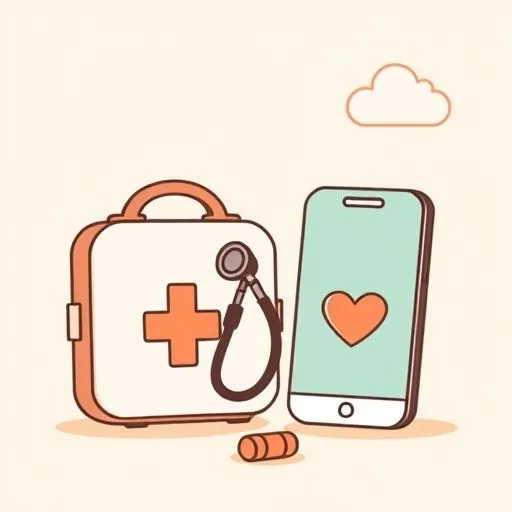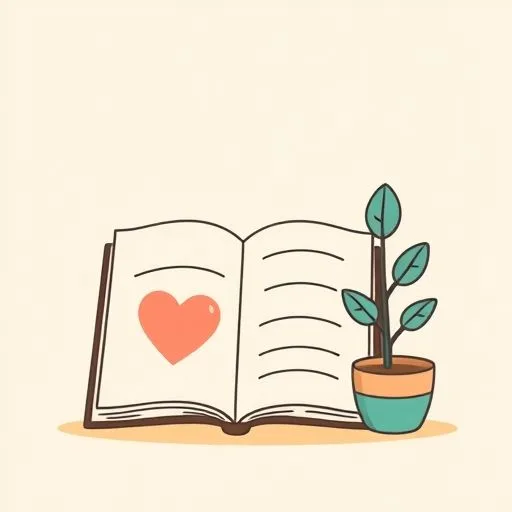
We’ve all been there—when the bedtime battle feels endless, and the phrase ‘because I said so’ escapes your lips before you realize it’s not helpful. That’s when I found myself watching my partner, scrolling late at night, searching for ‘why is my child so defiant at 3am?’ But what if we stopped trying to outparent the algorithm? Here’s how we’ve learned to use AI as a practical tool, much like the first-aid kit we keep by the diaper changing station.
AI as a Translator for the Chaos

Remember that moment your child’s protest turned into a full-blown floor-tantrum? Instead of the usual ‘why are you doing this?’ whispered through gritted teeth, we tried asking ChatGPT to explain the developmental stage. Within seconds, it became clear: ‘Three-year-olds are learning to assert autonomy. Try offering choices within boundaries.’
That’s what changed everything. AI isn’t about replacing human judgment—it’s like having a pediatrician’s notes on hand when you’re too exhausted to think clearly. We’ve used it to analyze:
- Food refusal: ‘How to respond to selective eating habits’
- Meltdowns: ‘Why transitions are hard for toddlers and how to help’
- Sleep struggles: ‘Gentle sleep training techniques that respect the child’s attachment needs’
We still often disagree with the suggestions. But that’s the point. It’s a conversation starter, not a replacement for our own parenting instincts.
Bedtime Stories That Aren’t in Our Imagination

You know that sinking feeling when you catch your kid swiping through some clunky app? That’s where we started asking ChatGPT to generate stories with our child’s favorite characters. ‘A dinosaur who builds a solar-powered robot friend’—perfect for our five-year-old obsessed with robotics.
It’s not about outsourcing the bedtime ritual. We still create homemade stories together—it’s those moments when the creative well runs dry. AI becomes a cubby house of ideas:
- Tiredness Special: ‘Generate a 5-minute story about a brave cat’
- Learning Tool: ‘Create a story about friendship using simple Spanish words for a 6-year-old’
- Conflict Resolution: ‘Tell a funny tale about two siblings solving a problem’
The key is curation. We preview the stories, tweak them, and often add our own inside jokes. It’s like having banchan ready in the fridge—the main dish still needs our personal touch.
How We Keep the Safety Net

You know that sinking feeling when you catch your kid swiping through some clunky app? That’s why we use AI guardrails with three simple rules:
- We’re the first filter: AI tools are screen-free, parent-facing apps only. We digest the information first.
- Safety is a conversation: When our eight-year-old asked about AI chatbots, we explained: ‘These are tools, not toys—like a grown-up smartphone.’
- Data is private: We never share personal family details, not even a nickname. The journaling app we use encrypts the data.
It’s like teaching them to swim. We wouldn’t just throw them in the pool. We’re there, holding them up, until they can navigate the technology independently.
The Journal That Keeps Us Calm

We’ve grown used to seeing her, late at night, typing out all the worries that come up during the day. That’s where we started journaling with an AI app—not for ourselves, but for our own anxieties. Honestly, some days I just type ‘HELP’ and see what comes back—it’s surprisingly comforting. We’ll type out ‘What’s the best way to handle a bedtime battle with defiance?’ and get a dozen strategies, all backed by developmental psychology research. It’s comforting to hear: ‘This is a common phase. Try these approaches.’
We use it as a tool to:
- Track patterns: ‘Note any behavior triggers that seem repetitive’
- Self-care prompts: ‘Grab a five-minute breathing exercise when you feel overwhelmed’
- Meal win ideas: ‘Ten healthy meals picky eaters might actually eat’
It’s not about having all answers. But next time, that moment when doubt creeps in—when you wonder if you’re doing anything right—there’s a non-judgmental voice of reason.
When AI is Actually Just a Human

We’ve seen the most profound impact of AI in the quiet moments—like when we were struggling with screen time for our seven-year-old. We asked ChatGPT to make a script explaining why we needed limits. It generated a simple, empathetic speech that we tweaked, but it’s like we’ve been given a starting point for a conversation.
But here’s what really struck me—the way these tools started showing us what matters most.
What we’ve learned:
- AI is a mirror: It reflects back to us what we prioritize—the questions we ask reveal our worries
- It’s not a solution: It offers a framework, but we still have to navigate the messy reality
- It misses the human detail: It can’t tell when your child had a rough day at school—it can only suggest generic responses
In the end, we still use it as a tool—like a well-stocked pantry. We still have to cook the meal. But having those ingredients ready? That’s what lets us focus on the real magic—those spontaneous, messy, beautiful moments of connection that no algorithm could ever replicate.
Source: The Costs of the Cloud, The New York Review, 2025-09-27
